The last time we compiled a “Top Five” list we were focused on the simple joy of point-and-shoot cameras. The automated nature of the five cameras we chose was perfect for those photo geeks interested in making beautiful photos with ease. But today we’re going to talk about something a bit different.
Today’s top five is all about vintage SLR (single lens reflex) cameras. Back in their heyday, these machines were the diametric counterpoint to point-and-shoot cameras, and for more than half a century their robust construction and fully adjustable nature made them the choice of working photographers all over the world.
We know that experienced photophiles are already rolling their eyes, wondering how we could possibly distill the thousands of amazing SLR cameras into a list of only five. We understand, and we agree that there are too many fantastic SLRs to call this an all-encompassing list.
Instead, we’re here to present five of the very best vintage, Japanese SLRs. These machines are legendary, totally relevant today, and are so fantastic that were you to choose any one you can be assured of owning one of the best SLRs in the world. If you’re looking for the absolute expression of photographic engineering in the form of an SLR, you’ve come to the right place.
So sit back, relax, and check out our list of the five best 35mm film SLRs from the land of the rising sun. If by the end of this post you’re not ready to add to your collection… well… have someone check your pulse.
Olympus OM-4 and OM-4 Ti
The first camera on our list comes from Shinjuku, a bustling ward of Tokyo that’s home to Olympus. It’s the Olympus OM-4, and it marks the pinnacle of the evolution of the diminutive OM series of 35mm SLR cameras.
Replacing the OM-2n, which we reviewed not long ago, the OM-4 was Olympus’ final 35mm film SLR before the big shift to digital cameras in 2002.
It’s easily the most refined film camera by the brand, and today it continues to be an incredible performer due in large part to its assumption that the photographer knows what he’s doing. When one shoots an OM-4, one feels as if they’re a crucial part of the photographic process.
This isn’t a coincidence. The OM-4 sprung from the idea that Olympus wanted to make a camera that was finely tuned for the professional, disregarding the automation and gimmicky features that were then being favored by their competition, who were all striving to court new shooters.
With concise implementation of controls, the OM-4 is refreshingly simple. Automation is limited to aperture-priority auto-exposure. That’s it. Beyond that you’re shooting manual mode, rewinding and advancing your film by hand, turning dials, flicking switches, and loving every minute of these tactile impulses.
But that’s not to say the camera isn’t capable of the heavy stuff. Its shutter is full-featured, allowing shots from 1-1/2000th of a second in manual mode, and up to an amazing 240 seconds in automatic mode. The Zuiko lenses are as good as any FD from Canon, though the range is a little less full-fledged. Still, Olympus glass makes exceptional images with little fuss. The viewfinder is big and bright, the body is weather-resistant, and there are enough available accessories to keep any collector busy for years.
The metering system in the OM-4 is cutting edge. Capable of taking a spot reading from eight different areas of the frame and averaging them, the OM-4 provides one of the best metering systems found in vintage cameras. It also offers the option of choosing the darkest or lightest areas of the frame and exposing based on these measurements.
This camera and it’s subsequent improved iteration, the OM-4 Ti, were remarkably well built and possibly the most robust SLRs of their era. Counterintuitively, it was also one of the smallest and lightest cameras of its day, and even in today’s market of mirror-less cameras it’s still amazingly compact. And this is one of the camera’s major selling points. To hold an OM-4 is an eye-opening experience. It’s just so damn small.
The combination of outstanding optics, concise design, and high build quality make the OM-4 a seriously attractive option for working photographers, travelers on the go, and anyone concerned with achieving maximum workability with minimum clutter. If this sounds like your kind of machine, the OM-4 is the best choice for you.
Buy it on eBay
Buy it on Amazon
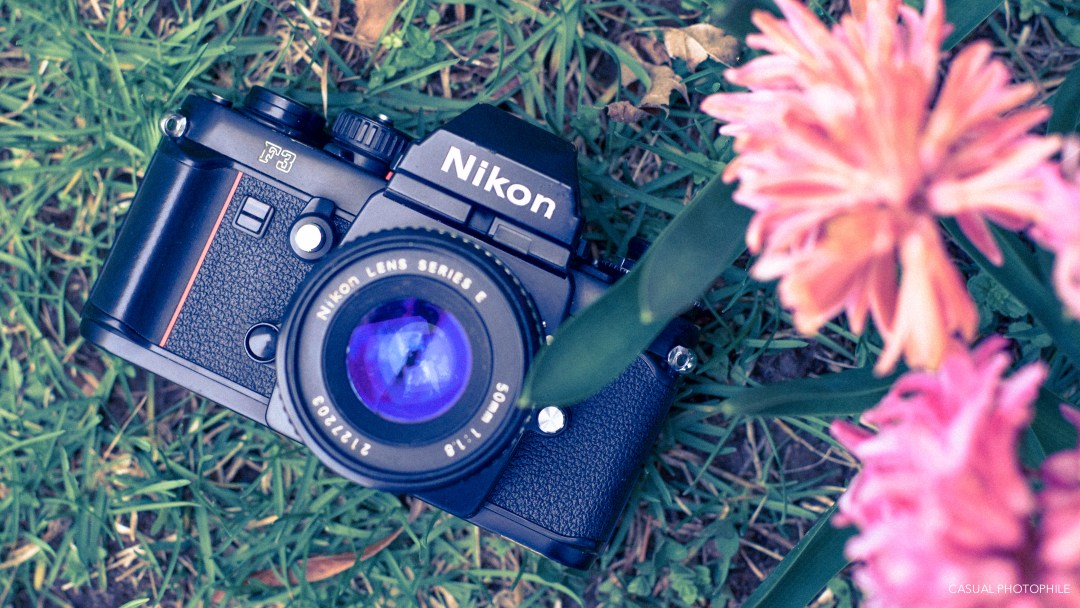
Nikon F3 (F3HP, F3T, etc.)
The next stop on our photographic voyage takes us on a 50 minute drive south, and brings us to Shinagawa, Tokyo. Here we find Nikon and their F3 professional camera, the quintessential manual-focus SLR from that company’s long history of excellent cameras.
In our full review, we talked about the sheer longevity of its production run. Manufactured from 1980 all the way up to 2001, the F3 continued to be a best-seller even as it was “replaced” by the newer F4 and F5 in 1988 and 1996 respectively. And while Nikon’s earlier professional-grade machines (the Nikon F and F2) were amazing cameras, it’s the F3 that really brought things to the next level.
What differentiates it from the pack is its combination of super-high performance, perfect ergonomics, and beautiful styling. To speak first about its looks, the F3 is simply a gorgeous camera. Designed by Italian designer Giorgetto Giugiaro (who has designed some of the most beautiful cars in the world, and prototype products for Apple), the F3 is considered by many to be aesthetically perfect.
It’s the perfect blend of capability and elegance; a no-nonsense design with perfect proportions and excellent usability. It’s also the first Nikon to feature a red embellishment on the grip. Not sure if that’s a feature, but why not?
In operation the F3 is sublime. It provides a combination of useful shooting modes, including semi-automatic (aperture priority) and full manual operation, it uses Nikon’s ubiquitous F mount, has just about every creature comfort you could ask for, and will do anything any photographer could ever ask of it. We could list all of the bells and whistles, but just trust us when we say that the F3 is a truly capable camera.
It also happens to be the most mechanically sound and thoughtfully constructed Nikon SLR of all time. The engineers and designers of this thing were clearly obsessive, since the F3 is built to a standard that’s just unheard of today. With excessive use of ball-bearings on mechanical components, available versions made of titanium, and electronic components of the highest caliber, the F3 was built to operate in any environment and last for a lifetime.
Surprisingly, you can buy this camera for a relatively small amount of cash. If you want the best manual focus Nikon SLR, this is it.
Buy it on eBay
Buy it on Amazon
Canon F-1 / F-1N
If we leave Nikon and drive south, in about 20 minutes we’ll have arrived in Ōta, Tokyo, and the headquarters of the company who brings us our next camera on the list. It’s Canon and their F1, and it’s important for a few reasons beyond simple superlatives.
The F1 is one of those machines that’s more than just the sum of its parts. It’s the first Canon SLR to really signal that company’s intent to become a world-class camera producer. With it, Canon sought to finally put an end to Nikon’s single-handed dominance of the professional photographer segment of the market. The machine was a success, and Canon forever gained a reputation that they could truly compete with their rivals from the north.
But that’s just history. The F1’s continued importance is in its technical chops. It’s quite simply a photographic masterpiece. It’s brilliantly designed and robustly constructed, and unlike many previous and subsequent Canons, this camera is truly durable. It was manufactured to last over 100,000 picture-taking cycles and could operate without trouble at 90% humidity and temperatures from -30º to 60º C (-22º to 140º F).
It uses full-aperture TTL metering for pin-point precise exposures, has a super-bright viewfinder, a versatile shutter capable of 1-1/2000th of a second, Bulb mode, multiple exposure mode, partial-stroke film advance, mirror lock-up, nine different focusing screens, multiple pentaprisms, accessory film backs, and the list goes on and on.
With more available accessories than nearly any camera ever made and an incredible line-up of lenses, the F1 is one of the most capable cameras of all time. And to speak of these lenses specifically, they’re simply marvelous. Canon created their FD range to pair with the F1, their new professional-grade camera, and with incredible optical marvels like the 55mm ƒ/1.2 it’s clear they meant business. Today, these FD lenses are an excellent value and they stand as one of the major reasons to shoot a Canon.
If you’d like to get your hands on an F1, take some time to research which model is right for you. Once you’ve nailed it down, get one and get shooting. You won’t regret it.
Buy it on eBay
Buy it on Amazon
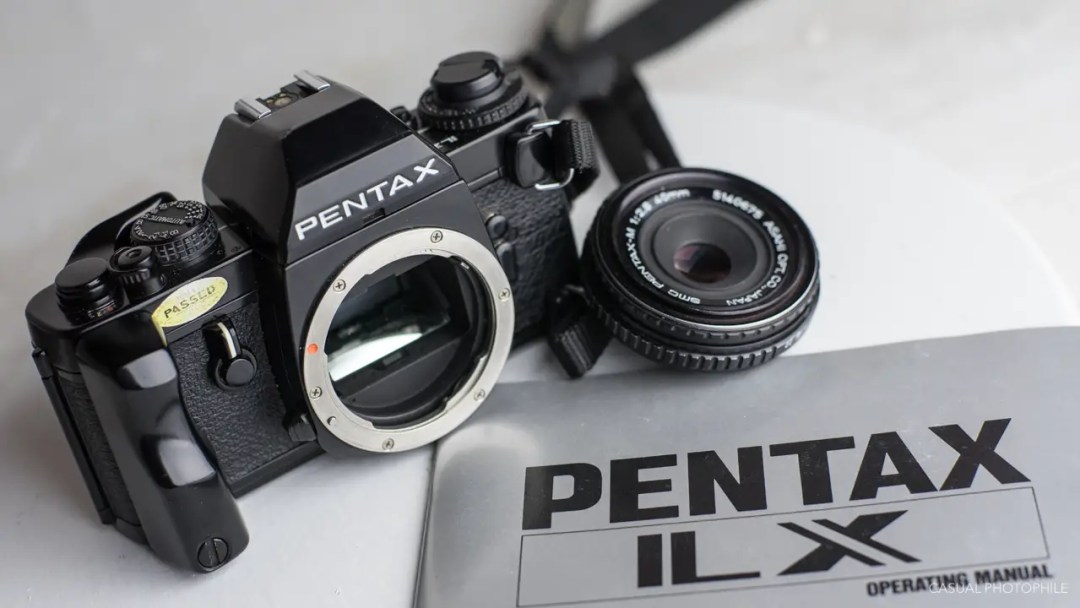
Pentax LX
Let’s get this out of the way immediately. Pentax gets no respect. They’re the runt of the litter, pushed away from the dripping teat of consumers’ wallets by the bigger, stronger pups Canon and Nikon.
Okay, that analogy was a bit gross and misplaced. Bear with us.
The problem with Pentax isn’t that they don’t make good cameras. They’ve always made perfectly capable cameras. Preconceived notions of what is and isn’t a professional camera, unwarranted biases against the smaller guys, and basic consumer ignorance seem to keep Pentax scratching at the door, while lesser cameras enjoy a warm blanket on the hearth.
Wait, was that another mixed metaphor?
In any case, Pentaxians have always had a handful of excellent choices when it comes to which Pentax to buy, and from 1980 to 2001 the best model to own was the LX. The top-of-the-line professional model from Pentax, the LX was a just as capable camera as contemporary offerings from Canon and Nikon. It was smaller, often trumped rival machines in features, and cost less than other companies’ cameras.
The LX is tiny, it’s weather-sealed and dustproof (a rarity in those days), it offered a mechanical shutter that could operate without batteries, and it was loaded with creature comforts like mirror-lockup, depth of field preview, and multiple exposure shooting. A cast metal frame was bracketed with metal outer plates, and the satin black finish was layered on top of true black chrome, which ensured that as the camera aged it would always retain its professional shadowy exterior. It’s metering system was phenomenal, and the available Pentax K Mount lenses were equal to any task.
Yes, the Pentax LX is just as durable and long-lasting as the other guys’ machines, looks amazing, is more compact, and has equally capable lenses and accessories. So why wasn’t it as successful as the offerings from Canon and Nikon? I won’t take a guess. But at least today we have the insight to know, and the online shopping sites to make reparations. If you want to show your support for the little guy, you’ll want to buy the professional Pentax; the Pentax LX.
Buy it on eBay
Buy it on Amazon
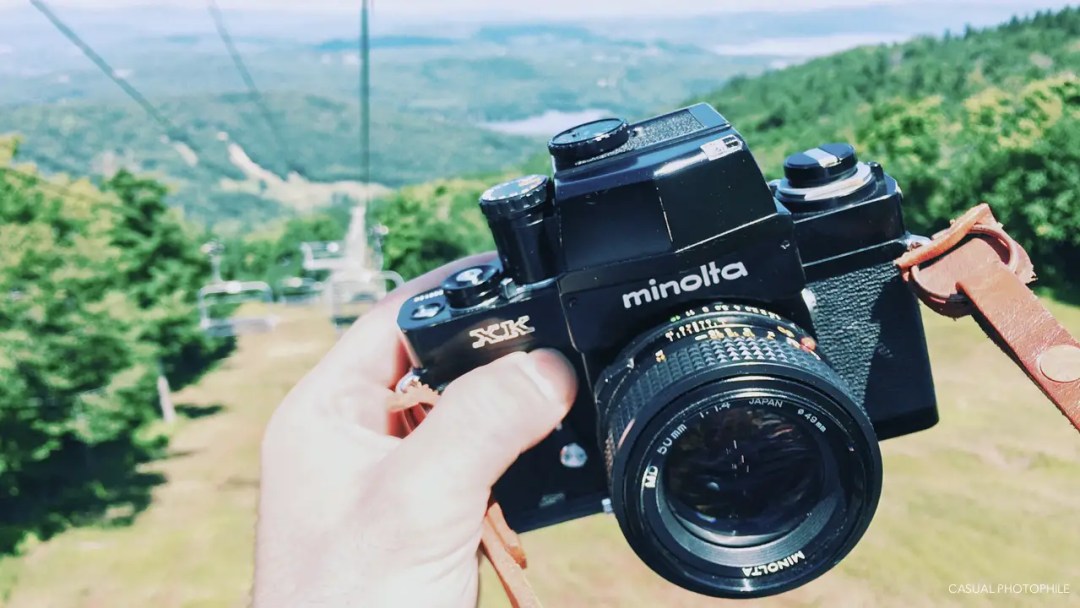
Minolta XK (XM, X1)
If there’s one camera on the list with which we’re completely in love, it’s this amazing machine from Minolta. The XK was Minolta’s answer to the Canon F1, and Nikon F, and in many ways it’s the better machine. Why do we think so? Well, you can read our full review here, but for starters the build quality is about the best you’ll ever find in a Japanese SLR. This camera is solid, hefty, and tank-like. Every component was designed and built with the professional in mind, and no expense was spared. This is evidenced in the then state-of-the-art CLC metering system (which we discussed here), the horizontally-traveling titanium foil curtain shutter, and the 11 optional viewfinder/pentaprisms (some of which contained incredible technology for auto-exposures, and silicon photo cells).
Another reason we feel so strongly for the XK is the truly unbeatable Minolta lens system. From the start, Minolta’s prowess as an optics manufacturer was virtually unbeatable. Even today in our testing of legacy lenses, Minolta’s MC and MD Rokkors outperform nearly everything from rival Japanese brands. With unbeatable sharpness, color, contrast, and bokeh, buying a Minolta camera is made better and better with every lens you purchase.
But all this excellence didn’t come cheap, and the XK was quite expensive. This coupled with the fact that Minolta’s marketing was not up to snuff compared to Canon and Nikon, and we start to see why the XK never really took off.
Though professionals seemed to have loved and appreciated the XK, the lack of advertising and high price made it difficult to sell to enthusiasts who may have only heard of the brand in passing. But as with all things, popularity doesn’t directly correlate to quality, and the XK is simply amazing.
Today it’s still an expensive camera, but it’s worth every penny. If you value ultimate quality, this is your best bet.
Buy it on eBay
Buy it on Amazon
And that’s that. These five cameras make up what can be considered a list of the very best Japanese, 35mm film SLRs. In no way are these the only SLRs worth owning. But if you’re hunting for the very best to add to your collection or to use everyday, any one of these five cameras will fit the bill.
If you’re more the type to browse on your own, check out F Stop Cameras‘ selection of SLRs, browse eBay’s Film Photography listings, or shop B & H Photo’s used gear.
Follow Casual Photophile on Facebook and Instagram
[Some of the links in this article will direct users to our affiliates at B&H Photo, Amazon, and eBay. By purchasing anything using these links, Casual Photophile may receive a small commission at no additional charge to you. This helps Casual Photophile produce the content we produce. Many thanks for your support.]

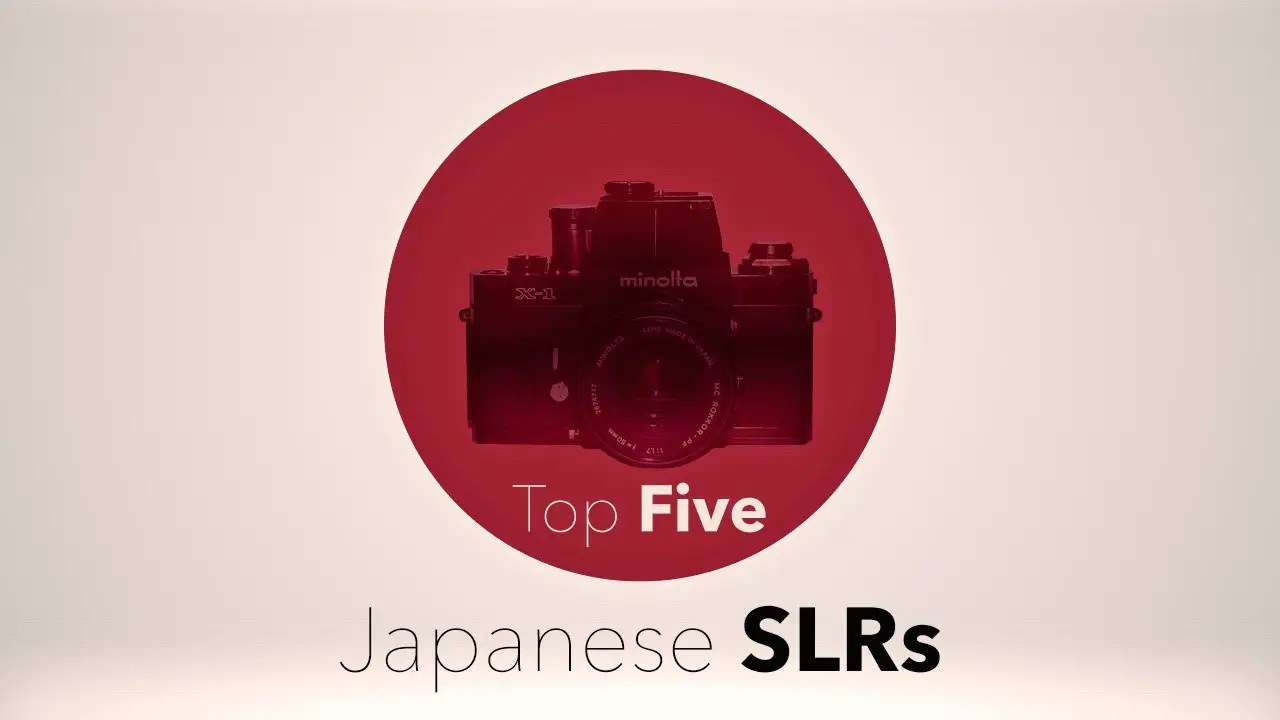
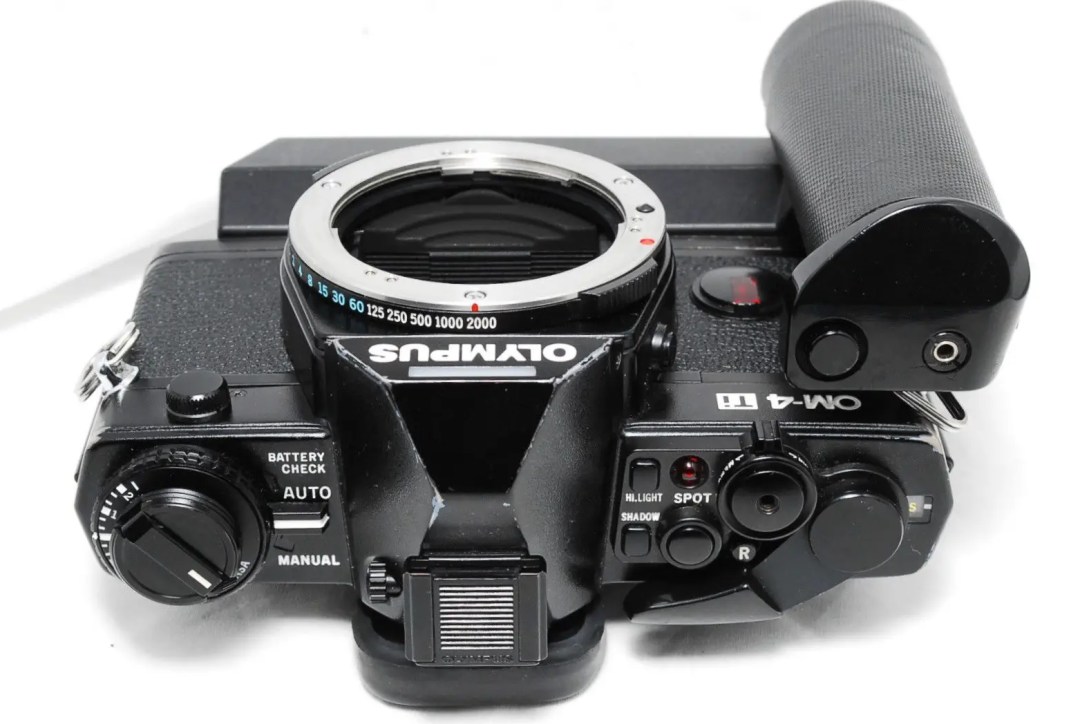
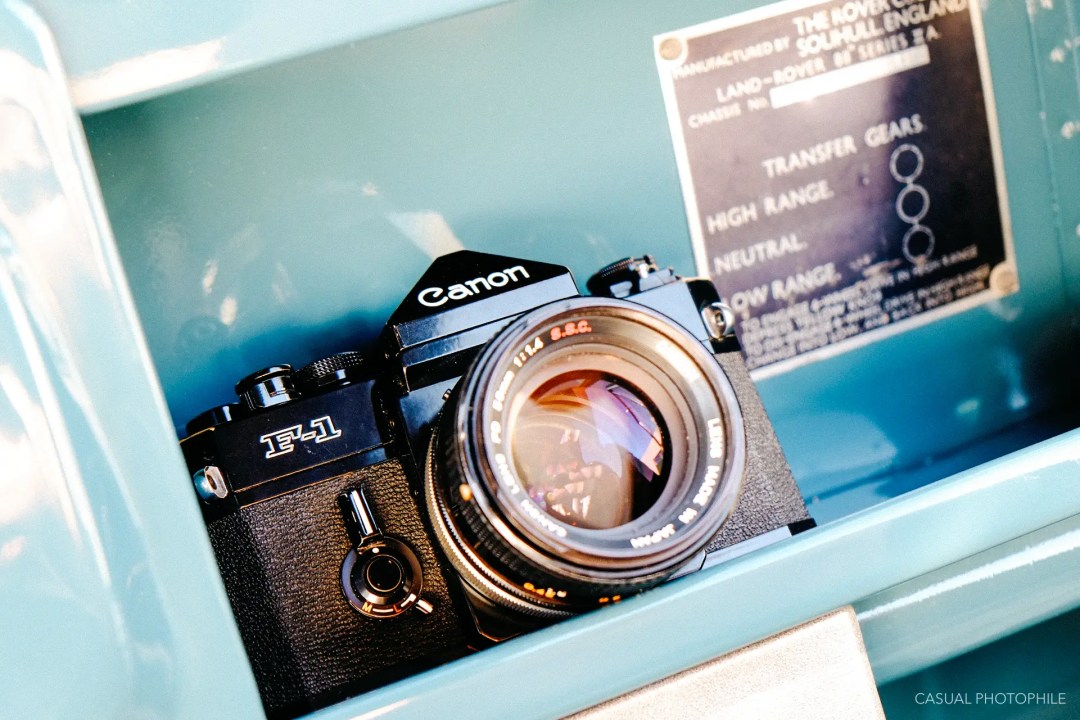

Nice selection. I only have the Nikon F3 (which was mother’s and she travelled in Afghanistan with it the the late 1980s): it’s a list to aspire to.